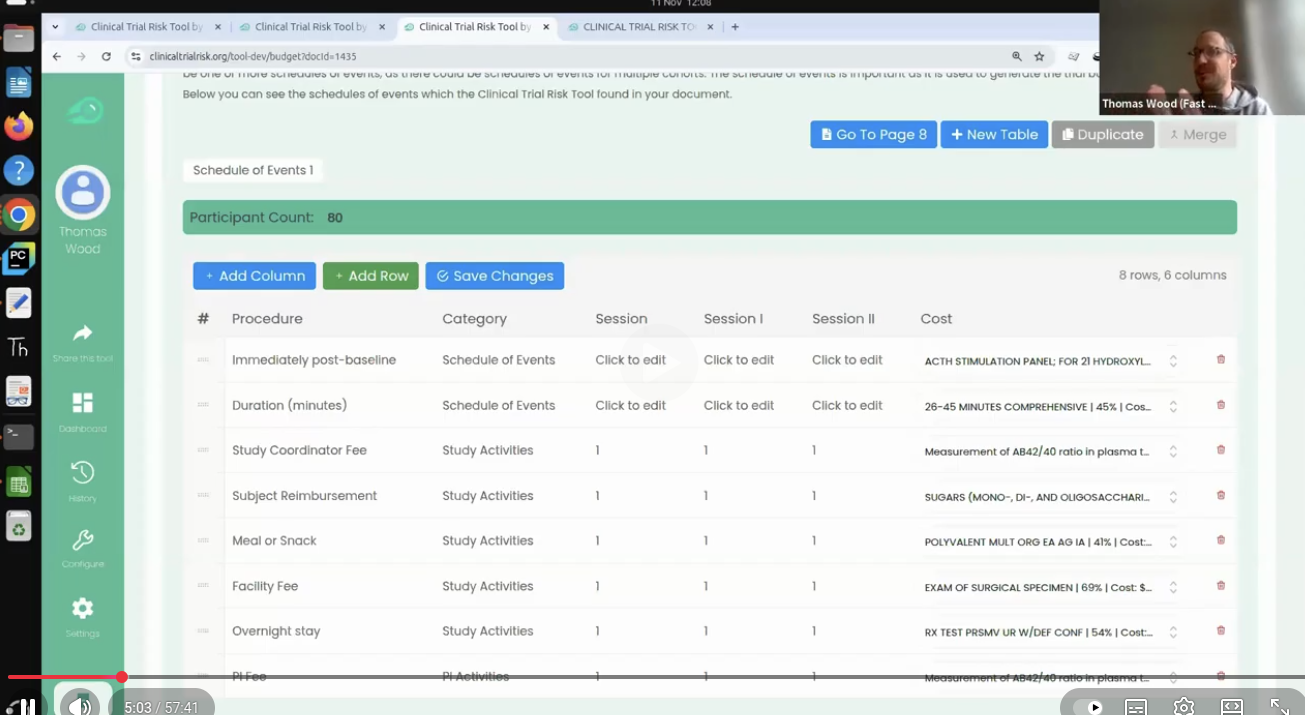
We have developed a tool allowing researchers to analyse HIV and TB Clinical Trial Protocols and identify risk factors using Natural Language Processing. The tool allows a user to upload a clinical trial protocol in PDF format, and the tool will generate a risk assessment of the trial. You can find example protocols by searching on ClinicalTrials.gov.

The tool allows a user to upload a trial protocol in PDF format. The tool processes the PDF into plain text and identifies features which indicate high or low risk of uninformativeness.
At present the tool supports the following features:
The features are then passed into a scoring formula which scores the protocol from 0 to 100, and then the protocol is flagged as HIGH, MEDIUM or LOW risk.
The Protocol Analysis Tool runs on Python and requires or uses the packages Plotly Dash, Scikit-Learn, SpaCy and NLTK. The tool runs as a web app in the user’s browser. It is developed as a Docker container and it has been deployed to the cloud as a Microsoft Azure Web App.
PDFs are converted to text using the library Tika, developed by Apache.
All third-party components are open source and there are no closed source dependencies.
A list of the accuracy scores of the various components is provided here.
Download this repository from the Github link as in the below screenshot, and unzip it on your computer

Alternatively if you are using Git in the command line,
Now you have the source code. You can edit it in your favourite IDE, or alternatively run it with Docker:
front_end. Run the command: docker-compose up

Each parameter is identified in the document by a stand-alone component. The majority of these components use machine learning but three (Phase, Number of Subjects and Countries) use a combined rule-based + machine learning ensemble approach. For example, identifying phase was easier to achieve using a list of key words and phrases, rather than a machine learning approach.
The default sample size tertiles were derived from a sample of 21 trials in LMICs, but have been rounded and manually adjusted based on statistics from ClinicalTrials.gov data.
The tertiles were first calculated using the training dataset, but in a number of phase and pathology combinations the data was too sparse and so tertile values had to be used from ClinicalTrials.gov. The ClinicalTrials.gov data dump was used from 28 Feb 2022.
Future development work on this project could include:
We have identified the potential for natural language processing to extract data from protocols at BMGF. Both machine learning and rule-based methods have a huge potential for this problem, and machine learning models wrapped inside a user-friendly GUI make the power of AI evident and accessible to stakeholders throughout the organisation.
With the protocol analysis tool, it is possible to explore protocols and systematically identify risk factors very quickly.

Thomas Wood presents the Clinical Trial Risk Tool at the Clinical AI Interest Group at Alan Turing Institute The Clinical AI Interest group is a community of health professionals from a broad range of backgrounds with an interest in Clinical AI, organised by the Alan Turing Institute. In the group’s November 2025 meeting, the talk was given by Dr Jeff Hogg, Programme Director, MSc AI Implementation (Healthcare), University of Birmingham and Clinical Innovation Officer in AI, University Hospitals Birmingham NHSFT, titled AI Readiness for Health and Care Provider Organisations.

Guest post by Safeer Khan, Lecturer at Department of Pharmaceutical Sciences, Government College University, Lahore, Pakistan Multi-Arm & Multi-Stage (MAMS) Clinical Trials Design Tips The design of clinical trials is increasingly challenged by the Rising Costs, limited availability of eligible patient populations, and the growing demand for timely therapeutic evaluation. Traditional parallel-group designs, which typically compare a single intervention to a control, are often insufficient to meet these pressures in terms of speed, efficiency, and resource utilization.

You can use the t-test when you want to compare the means (averages) of continuous data between two groups, such as blood pressure or maximum concentration of a drug in urine (Cmax). If you have data with a dichotomous outcome, you can use the Chi-Squared test instead - please try our Chi-Squared sample size calculator. The calculator below will calculate the minimum sample size for you. Your expected effect size d is the standardised effect size according to Cohen’s definition.